Exhibitions of the once highly sought-after white porcelain reveal the sophistication beneath its simple surface, Lin Qi reports.
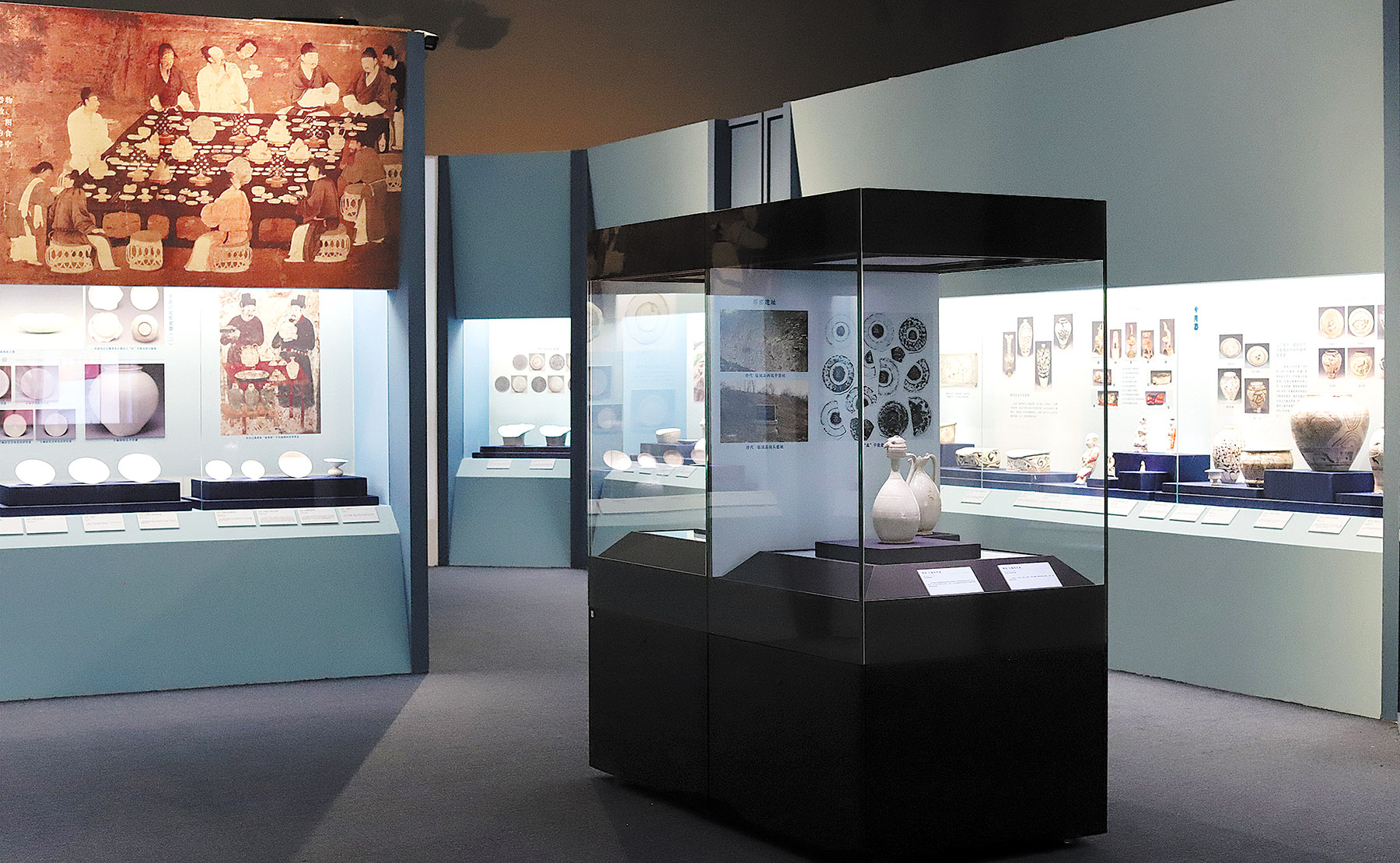
It's often said that one is easily betrayed by one's eyes. Sometimes, to be more precise, it is actually impeccable workmanship that "deceives" the eye.
Visitors to Blanc de Chine, an exhibition of Dehua white porcelain that opened at the National Museum of China last August, certainly felt that they had been tricked — albeit delightfully — upon seeing a pile of paper with rough edges.
As they approached, many gave voice to their surprise, took photos, and couldn't wait to share the images online as the "paper" actually turned out to be delicate sheets of ceramic created by artist Su Xianzhong.
This "paper" became one of the most talked-about exhibits at the show.
The title of the exhibition — Blanc de Chine — is the French name given to the glossy, milky white porcelain produced for centuries in Dehua county, Quanzhou, Fujian province.
The mass production of Dehua white ware can be traced to the Ming Dynasty (1368-1644), and in the 17th and 18th centuries it arrived in Europe via the Maritime Silk Road, becoming popular and motivating European potters to replicate it.
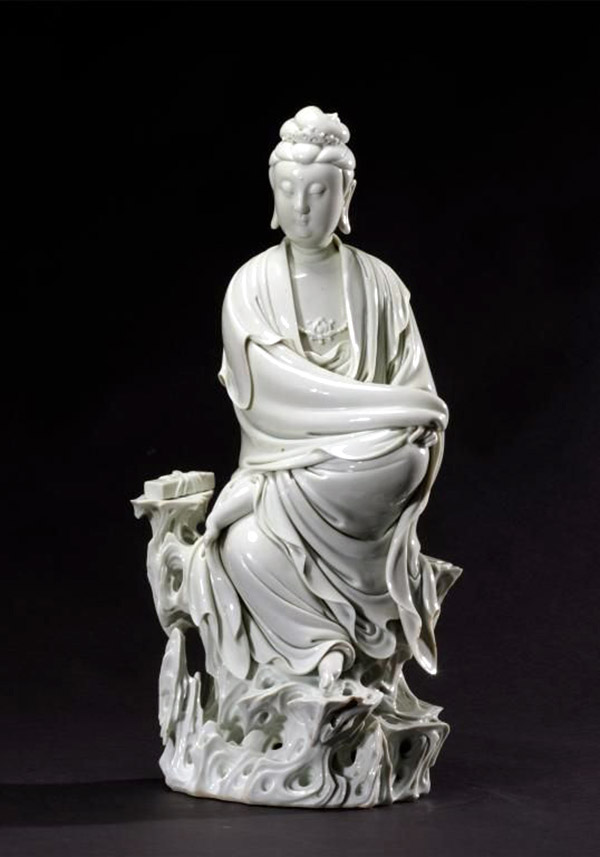
The contrast between the stiff body and creamy, sleek surface resembling white jelly inspired the name, which means "white from China".
But Dehua was not the only historical hub producing quality white ceramics. From as far north as Lindong town in Baarin Left Banner, Inner Mongolia autonomous region, to as far west in Wuwei in Gansu province, the remains of once booming kilns dedicated to manufacturing white ceramics have been found.
A tribute to this glamorous chapter in Chinese ceramic history can now be seen at Pure and Infinite, an exhibition at the Hebei Museum in Shijiazhuang, Hebei province, which runs until April 13.
It has been organized in collaboration with the National Museum of China and puts on display examples of white ware from the collections of both museums, as well as from other cultural institutions.
The exhibits include artifacts from the sites of historical kilns, some of which no longer exist, and work by contemporary artists that reflect the conservation of the white ceramic tradition, like Su's Paper series.
"The exhibition is a display of more than 300 pieces of the varying types of white porcelain from different kilns from across the country, from past to present," says Wang Yueqian, the exhibition's curator and a researcher at the National Museum of China.
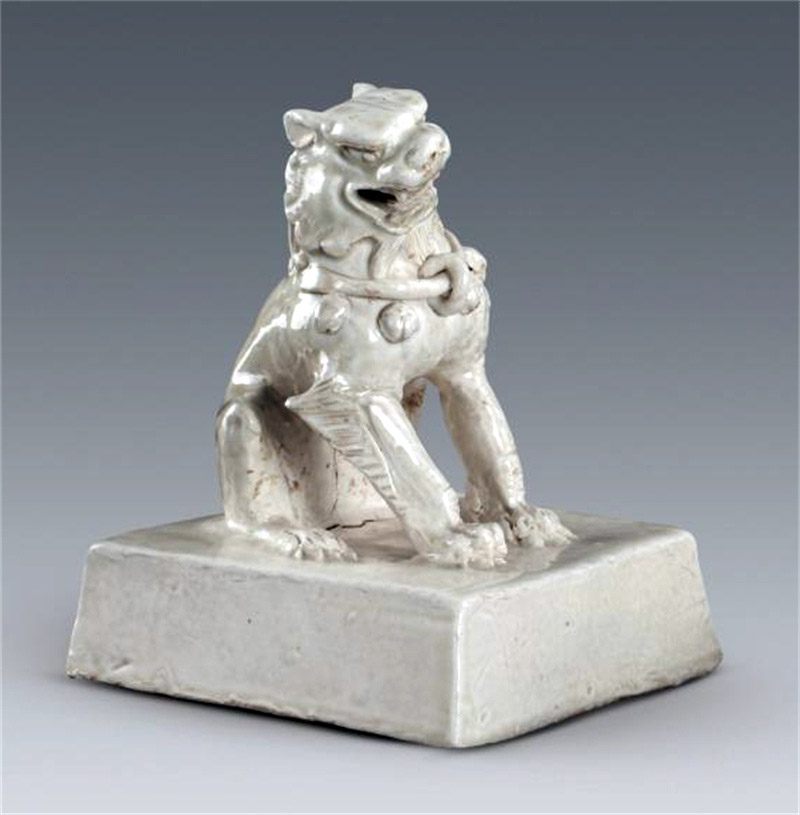
"These sophisticated ceramics are radiant for their diversity and cultural content, and have inspired modern potters to explore new possibilities in the field. The kiln fire never dies, but erupts with innovative spirit," he adds.
Most ceramics before the 6th century were celadon, which is known for its pale blue-green glaze, and according to Wang, the earliest examples of white porcelain emerged during the final years of the Southern and Northern Dynasties (420-581).
The technique achieved maturity during the Sui Dynasty (581-618), as testified by the well-polished pieces found in an early 7th-century tomb near Xi'an, Shaanxi province.
"The Tang Dynasty (618-907) saw a situation of rivalry in which the production of celadon in the south and white ceramics in the north went neck and neck. White ware kilns were largely found in the north and led to the rise of types named after their distinguished kilns," Wang says.
Pure and Infinite reflects the eminent status Hebei enjoyed in white ware production. It was home to the Xing kiln, which rose to become a key hub of white porcelain during the Tang Dynasty, the Ding kiln — one of the Five Great Kilns of the Song Dynasty (960-1279) — the Cizhou kiln, and the Jingxing kiln.
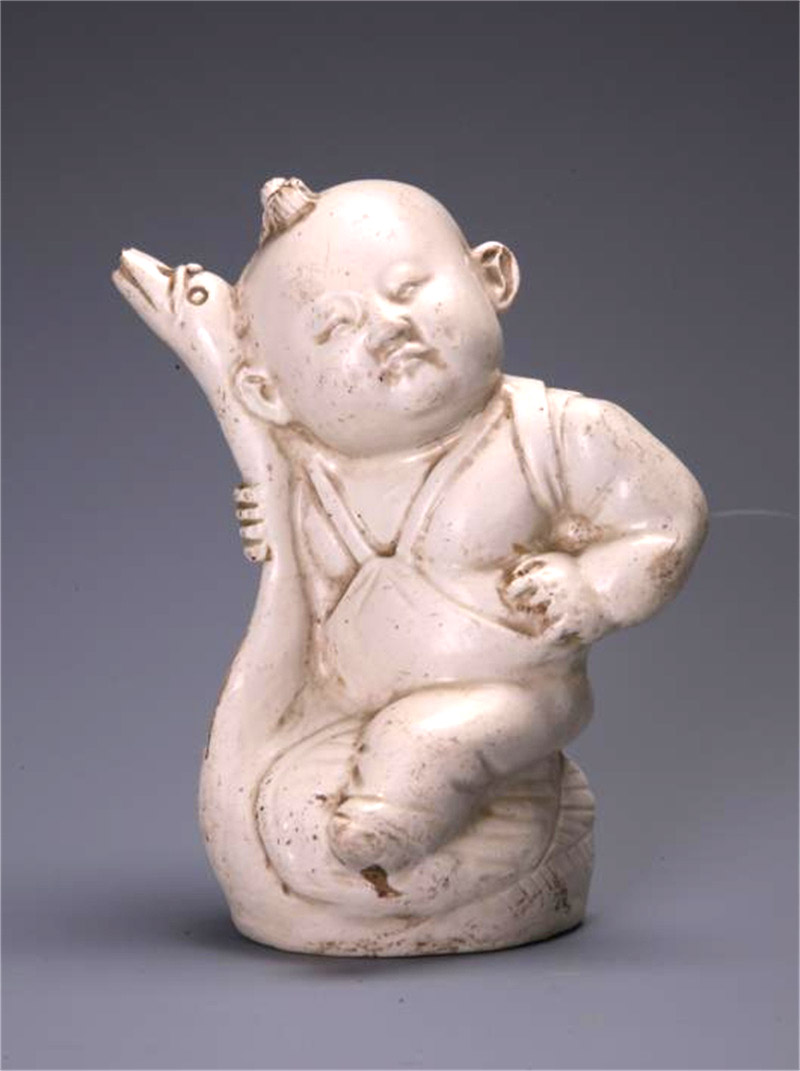
One vivid example of Ding ware on show at Pure and Infinite is a flask from the Northern Song Dynasty (960-1127).
The pot, which stands 15 centimeters in height, is made in the shape of a small, cheerful boy riding a goose. Water is poured in through a hole on the back of the boy's head, and exits through the goose's mouth, and the boy's left arm posed on his waist serves as the handle.
An elevated pillow from the Yuan Dynasty (1271-1368) illustrates one of the distinctive features of Cizhou ware — black patterns against a white background — which lends it a simple beauty.
Wang says that in the final stages of the Tang Dynasty, white porcelain shifted southward, as kilns in Jingdezhen, Jiangxi province, began production. Later, during the Ming and Qing (1644-1911) dynasties, Dehua white raised the artistry of white ware to new heights, as evinced by its commercial success as part of the prosperous maritime trade between China and the world.
Among the family kilns still committed to the trade is the one belonging to Su's family, which was first fired up by his great-grandfather, Su Xuejin. His Subduer of Tigers, a figure of a luohan (the Chinese name for an arhat, or a Buddhist adept on the cusp of attaining nirvana), is in the collection of the Victoria and Albert Museum in London, alongside Su Xianzhong's Paper No 1.
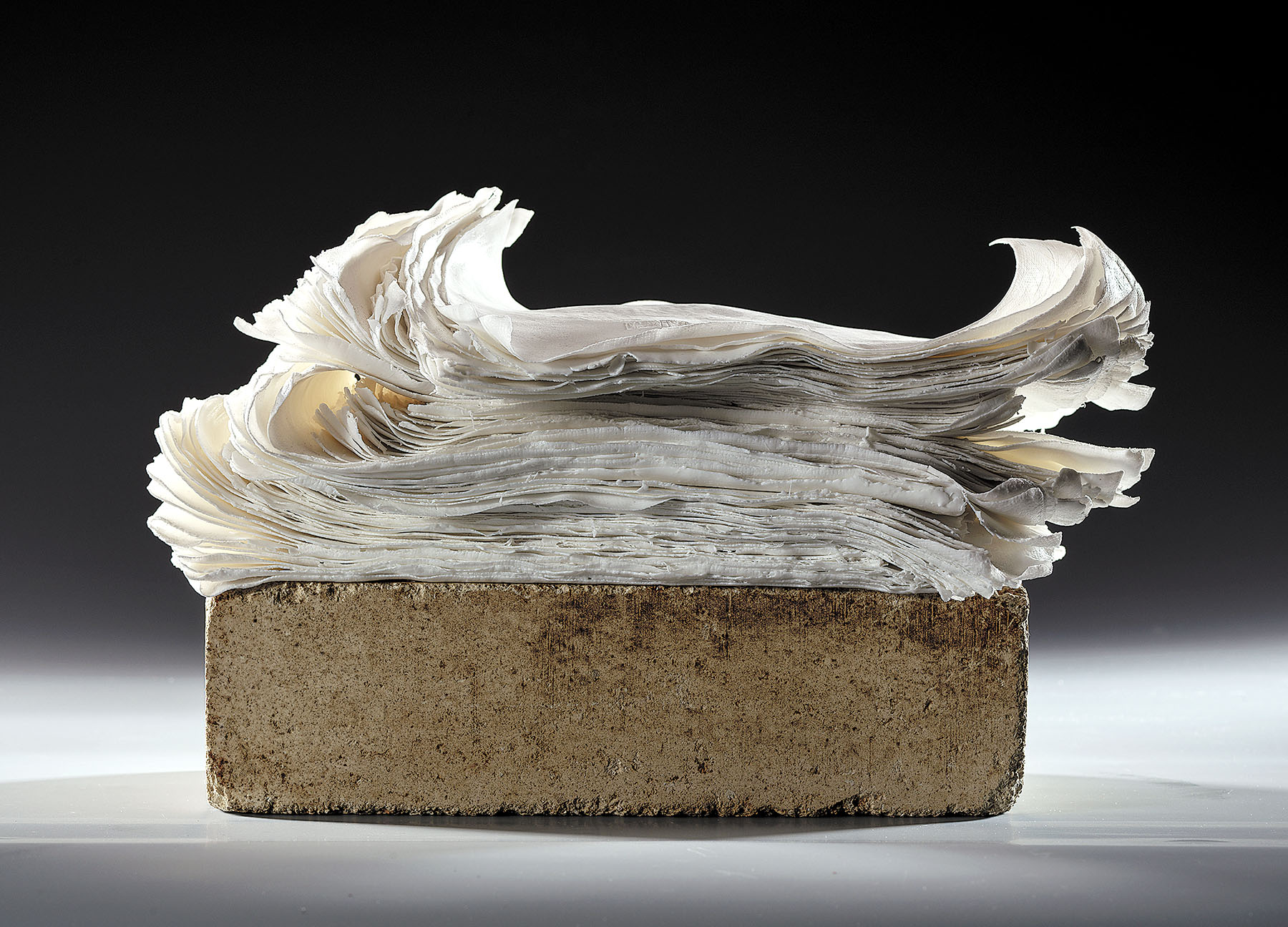
For the artist, keeping the family heritage alive is about renewing the presentation of traditional handicrafts.
In his Paper series, the stack of "pages "is placed on a brick Su Xianzhong found in the family kiln.
He says the bricks are what support this trade and make his work possible, and they help remind people of the close association between the fire at the kilns and the smooth texture of the porcelain.
Pure and Infinite is the first exhibition of pieces from the National Museum of China to be displayed outside of Beijing this year. It is the sixth collaboration with the Hebei Museum since the two museums began staging exhibitions of each other's collections in 2018.
In recent years, the national museum has lent items from its collection to museums outside Beijing to benefit a wider audience. Chang Li, director of the Merchandise and Development Department of the National Museum of China, says that they organized 14 exhibitions in China and abroad last year that welcomed more than 2.7 million visits.
The program this year includes a bronze ware exhibition at the Henan Museum in Zhengzhou, Henan province, and an exhibition about traditional Chinese medicine at the Dezhou Museum in Dezhou, Shandong province.
Contact the writer at linqi@chinadaily.com.cn


